![]()
For thousands of years, people have been coming to Lakeside to enjoy its moderate climate and to take advantage of the abundant supply of water in Lindo Lake — San Diego County’s only natural lake.
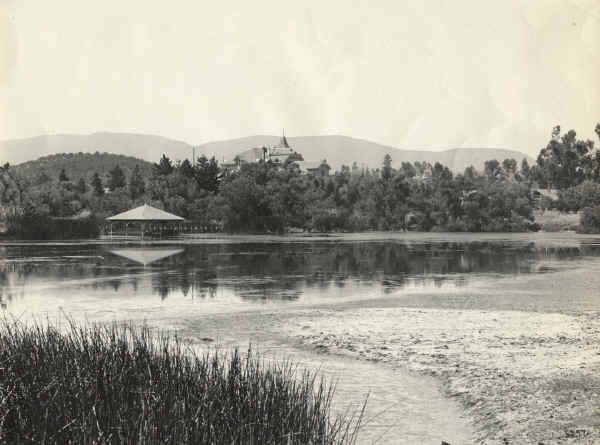
The first visitors were the Kumeyaay. They lived a peaceful life of hunting, fishing, and gathering acorns, mesquite beans, piňon seeds and berries. They were also skilled in making pottery, weaving baskets, and making jewelry from shells, seeds, hollow bones and small stones. During the cold months of winter, the Kumeyaay migrated to the desert side of the mountains for the warmth from their sacred “Great Rocks.” As soon as the cold weather ended, they moved west back towards the coast.
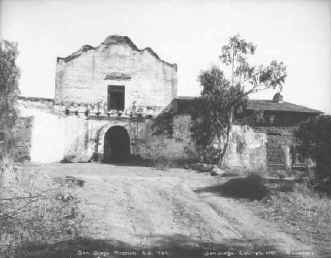
Soon after the San Diego Mission was established in 1769, the Padres began to explore the country to the east seeking grazing lands for their cattle, sheep and other livestock. Naturally they followed the San Diego River upstream. About ten miles from the mission, they discovered a broad valley with a luxuriant sea of wild grasses. True to the Spanish custom of giving descriptive place-names, they called this valley El Cajon, “the box.” They named it so because the valley is truly boxed in by high hills and mountains. This name appears on maps as early as 1800. Here hundreds of head of cattle and sheep grazed, and in the low hills on the east side of the valley (Lakeside) large numbers of swine were raised. This section became known as Caňada de Los Coches, “Glen of the Pigs.”
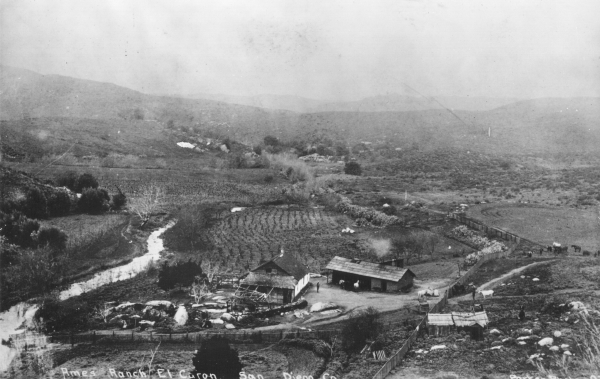
Around 1820, when the land was still Mission property, Jose Maria Estrudillo of San Diego built his summer home. It was the first known in Lakeside and was located near what is now Maine Avenue and Parkside Street .
With land grants, many ranchos were created under the Mexican flag between 1831 and 1848. In 1843 Apolinaria Lorenza was granted 28.39 acres, named Caňada de Los Coches, in order to preserve the Mission hog ranch for the Padres. And in 1845 the 48,799.85 acre land grant, titled El Cajon Rancho, was made to Maria Antonio Estudillo de Pedrorena.
The Los Coches Rancho was completely surrounded by the El Cajon Rancho, but the two grants were at all times separate. Los Coches was the smallest San Diego County land grant, and El Cajon was the largest. In 1859 the little Los Coches Rancho was purchased from the Catholic Church by Jessie Julian Ames. In 1869 the El Cajon Rancho was sold and opened for settlement.
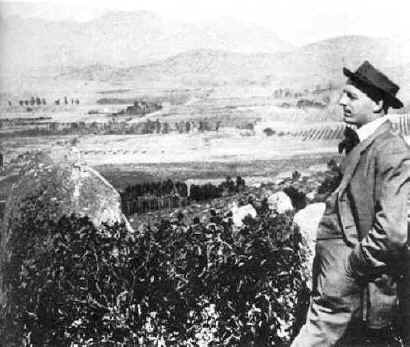
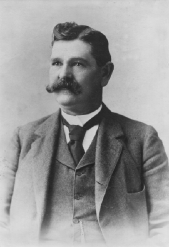
In the fall of 1870, Benjamin P. Hill came to the El Cajon Valley and purchased 10,000 acres from the Pedrorena’s estate to start a ranch. He built his first home in Lakeside at what is now Wildcat Canyon and Willow Roads. There he raised thoroughbreds and had a training racetrack. This ranch was described as being “twenty miles from the county seat and post office . . . and from school and church seven miles.”
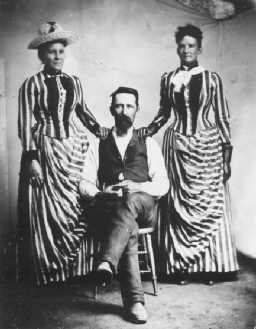
& Beatrice Swycaffer c.1890
Mr. Joseph Foster, after his marriage to Martha Swycaffer in 1880, bought the John B. Rea homestead at the foot of what is now San Vicente Dam. “Uncle Joe,” as he was affectionately known, and Jim Frary started a stage coach line from San Diego to Julian. For 23 years Mr. Foster was a County Supervisor for the 3rd District, and served as chairman of the Board of Supervisors for 14 years.
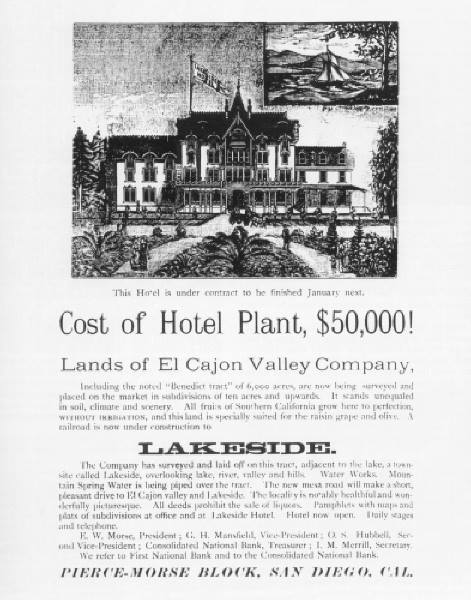
In 1886 the newly formed El Cajon Land Company purchased 6,600 acres from Ben Hill, subdivided the town site, and set aside 45 acres around Lindo Lake for a public park. Immediately the land company began to promote Lakeside as a town.
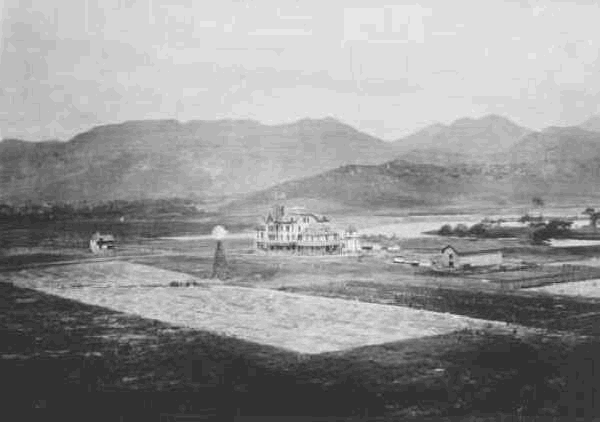
To attract people to the new township, the El Cajon Land Company erected a large 80-room Victorian-style inn with a resort next to Lindo Lake. The construction was completed in 1887 at the cost of $50,000.

When the railroad came to Lakeside 1889, families from throughout the country came on the San Diego Cuyamaca Eastern Railroad with all the joyous crowding and paraphernalia appropriate to a school or church picnic. Not much lake was apparent, and the decorations consisted mostly of sand and eucalyptus trees, but the picnics were always highly exciting.
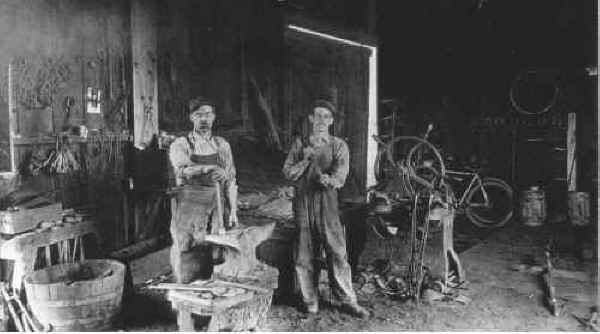
Small businesses began to spring up – Beamer’s Stable and Blacksmith’s shop, a boarding house which became a general store, a butcher shop, and a school was started. And to take care of the spiritual needs of the new town, a church was built in 1896. By the turn of the century, Lakeside had become a thriving community.

John H. Gay bought the Lakeside Inn in 1904 and fenced the park claiming it as part of his estate. Then he laid out a 60-foot wide race track that circled the lake which was especially adapted for automobile and horse racing. On this track in April of 1907, Barney Oldfield, driving his “Green Dragon,” set a new land speed record of 70.3 mph. The beautiful grounds of the Inn continued to be the scene of many parties where celebrities and millionaires met for golf, boating, duck hunting or to attend the races. Sadly in 1920, the Inn was dismantled.
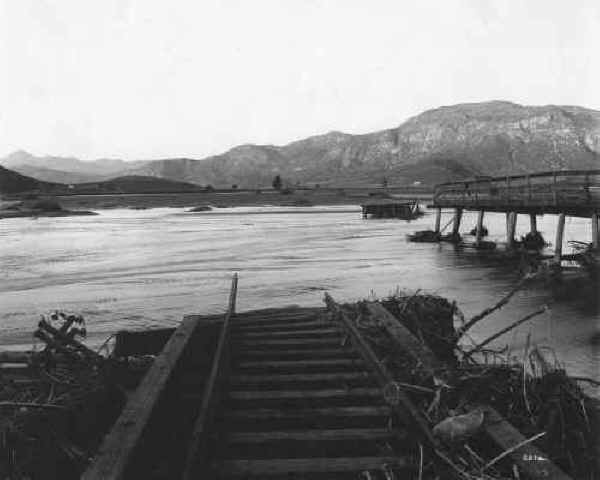
In 1920, newcomers could hardly believe that Lakeside had such a good rail connection from San Diego.There were excellent passenger and freight services with many daily runs as well as a Saturday Night Special to bring home the crowds who had enjoyed a day in the country. Each time the tracks had been destroyed by the floods, they were immediately repaired to Lakeside. But the line to Foster was not replaced after the Flood of 1916. The tracks to Lakeside were repaired after the Flood of 1927, but by that time the line was no longer as profitable. By 1938 the link from Santee to Lakeside had been removed, and the Santee to El Cajon portion was removed in 1942 when Gillespie Field was completed. This marked the end of the railroad era in the Lakeside area.
On July 5,1920, the first Lakeside Rodeo was organized by Bill Kuhner and held on the Emil Klicka property south of Lindo Lake. In 1933, the Lakeside Rodeo Association was formed and the arena was moved to an area east of Channel Road. A grandstand was built, and chutes and fences were installed. Today, the annual rodeos are organized by the Lakeside Stadium Association and are held at the new rodeo grounds on Mapleview Avenue.
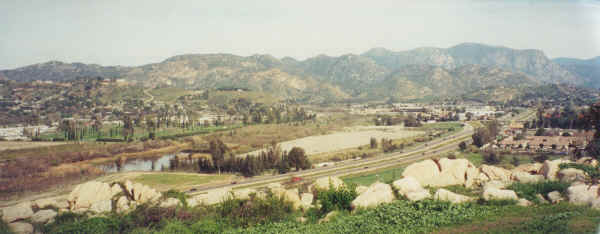
As we move forward though the 21st century, Lakeside has far exceeded its founder’s visions of population and commerce. But, it still maintains a friendly small town atmosphere. By taking a leisurely stroll down Lakeside’s revitalized historic Maine Avenue; you will experience a piece of the past and sense the pride that has been taken in our rich and diverse history.
The Lakeside Historic Survey Report Landmarks/Survey Results offers further information regarding the history of Lakeside. (this is a pdf and opens in a new window)
The Lakeside Survey Report Chapter II provides a bit more history. (this is a pdf and opens in a new window)
